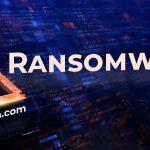In the realm of cyber threats, the “Network Solutions” email scam looms as a deceptive ploy, masquerading as official communication from the reputable technology company, Network Solutions. However, beneath this facade lies a nefarious phishing campaign designed to dupe recipients into compromising their email account credentials. Understanding the intricacies of this scam and implementing proactive measures becomes paramount in safeguarding against its deceptive intents.
Delving into the “Network Solutions” Email Scam
The scam unfolds through deceptive emails purportedly notifying recipients that their email storage is nearing its limit. These fraudulent messages claim dire consequences if the storage limit is exceeded, urging recipients to increase their storage space by clicking on a provided link.
The link embedded in these scam emails redirects recipients to a fraudulent website meticulously crafted to resemble the sign-in pages of their respective email service providers. By entering their login credentials on this phishing site, unwitting recipients inadvertently furnish cybercriminals with access to their email accounts.
Email accounts serve as gateways to a multitude of digital platforms and services. Compromised email credentials empower cybercriminals to exploit these accounts for various fraudulent activities, including spreading malware, soliciting loans from contacts under false pretenses, and executing unauthorized transactions on finance-related platforms.
Subject: NOTICE: Limited email storage remaining for ******** [-Now-]]
NetworkSolutions
–
1-888-793-7657
Mailbox Almost Full
Dear Customer,
This message is to inform you that your mailbox is 95% full and has almost reached your storage limit.
Exceeding your storage limit will prevent you from sending, receiving and storing emails.
10/13/2021 3:41:38 a.m.:
CLICK TO ADD STORAGRE HEREE
Scorecard Login!
Connect With Us
Please do not reply to this email. Replying to this email will not secure your services. Please review our Privacy Notice for any questions related thereto and please see our Services Agreement for the terms and conditions governing Network Solutions products and services.
©2021 by ******** Network Solutions, LLC. All rights reserved. 12808 Gran Bay Parkway, West | Jacksonville, FL 32258
Network Solutions is a Web.com Group, Inc. company.
Text of the “Network Solutions” Email Scam
Similar Threats in the Phishing Landscape
The “Network Solutions” email scam is just one facet of a broader spectrum of phishing scams leveraging social engineering tactics to deceive users. Comparable threats in the phishing landscape include:
- Microsoft Account Verification Scam: Emails mimicking Microsoft’s notifications, coercing recipients to verify account details through deceptive links, leading to compromised credentials.
- PayPal Account Limitation Scam: Fraudulent emails posing as notifications from PayPal, claiming account limitations and directing recipients to malicious websites to resolve alleged issues.
- Banking Account Verification Scam: Phishing emails impersonating banks, urging users to verify account details to prevent service interruptions, resulting in stolen banking credentials.
Thwarting the Scam: A Comprehensive Guide
1. Vigilance with Emails: Exercise caution with unsolicited emails, especially those requesting sensitive information or urging immediate action.
2. Independent Verification: Avoid clicking on links in emails; instead, independently access your email account through a trusted method to verify storage limits or account status.
3. Avoid Sharing Credentials: Refrain from entering login credentials on unfamiliar websites or pages linked from suspicious emails.
4. Enable Multi-Factor Authentication (MFA): Enhance account security by enabling multi-factor authentication wherever available, adding an extra layer of protection.
5. Education and Awareness: Educate yourself and others about common phishing tactics and the importance of scrutinizing emails before taking action.
Conclusion
The “Network Solutions” email scam serves as a stark reminder of the pervasive nature of phishing and social engineering tactics. By fostering awareness, adopting a skeptical approach towards unsolicited communications, and implementing robust security measures, users can fortify themselves against such deceptive threats. Cybersecurity vigilance remains an ongoing commitment, and proactive measures stand as the bulwark against the evolving landscape of cyber threats.



